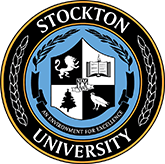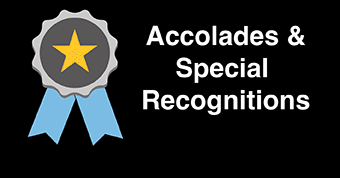Strategic Plan - Financial Sustainability

Implementation Goals & Accomplishments
Lead Unit: Administration & Finance
Progress: 75%
FY23 Highlights:
- The Division of Administration & Finance partnered with colleagues across the University in the submission of three grant applications to the State of New Jersey Office of the Secretary of Higher Education for Higher Education Capital Facilities Grant Program funding.
- The Fiscal Affairs team successfully implemented Governmental Accounting Standards Board (GASB) Statement No. 87, Leases.
FY22 Highlights:
- The Procurement & Contracting team continued its focus on identifying cost savings and ensuring that University dollars are spent effectively and efficiently.
- In collaboration with ITS, Procurement & Contracting’s “e-RFP Notification System” was rebranded as the “Vendor Portal.”
- The Office of Budget and Financial Planning worked closely with all divisions to perform
position control analyses and recommended approaches that resulted in cost-savings
measures
to the University.
FY21 Highlights:
- Our efforts included strategic budget cuts, implementation of a rigorous expenditure pre-approval process, continuous financial modeling, and prudent use of federal and State COVID relief funding.
Lead Unit: Administration & Finance
Progress: 75%
FY23 Highlights:
- The Division of Administration & Finance continued to partner with Enrollment Management, the Chief Planning Office, and Student Affairs and others to project Academic Year and Summer Session enrollment, housing occupancy, and the corresponding financial impact.
- Representatives from the Office of Budget and Financial Planning met monthly with
members of Academic Affairs and Student Affairs to review the budget, new initiatives,
enrollment,
retention, and personnel changes.
FY22 Highlights:
- Representatives from the Office of Budget and Financial Planning met monthly with members in the Office of the Provost and the Office of the Vice President for Student Affairs to review the budget, new initiatives, enrollment, retention, and personnel changes.
- The Divisions of Administration & Finance, Academic Affairs, and Enrollment Management are working collaboratively on several new and existing programs, including a 3+1 LIBA program with ACCC, the Live, Work, Learn Program in Atlantic City, programs qualifying for the fully online tuition rate, discounted partnership programs, and student/parent enrollment.
FY21 Highlights:
- The Division of Administration & Finance has successfully partnered with Enrollment Management and the Chief Planning Office to project Academic Year and Summer Session enrollment and housing occupancy and the corresponding financial impact.
Lead Unit: Administration & Finance
Progress: 100%
FY23 Highlights:
- The Office of Budget & Financial Planning continued to maintain and monitor zero-based budgeting in FY23. Although the process was optional for this fiscal year, many divisions/departments elected to continue the exercise for hourly and/or non-salary expenses.
FY22 Highlights:
- The Office of Budget & Financial Planning continued to maintain and monitor zero-based budgeting (ZBB) for the entire University in FY22.
FY21 Highlights:
- The University successfully implemented zero-based budgeting for all non-salary expenditures.
Lead Unit: Administration & Finance
Progress: 100%
FY23 Highlights:
- The Division of Administration & Finance and the Division of Enrollment Management worked collaboratively on the annual Fitch Ratings and biannual Moody’s Investors Service reviews.
- Fitch Ratings upgraded Stockton from ‘A-‘ to ‘A’ with a stable outlook.
- Moody’s Investors Service upgraded Stockton from ‘Baa1’ to ‘A3’ with a stable outlook.
FY22 Highlights:
- The University continues to review key enrollment and financial ratios measuring market position, operations, financial reserves, and debt/liabilities, and compares the University’s ratios to the NJ Public Mean, Moody’s Public Baa1 Median, and the other senior public colleges and universities in NJ.
FY21 Highlights:
- Annually, the University completes a review of key enrollment and financial ratios measuring market position, operations, financial reserves, and debt / liabilities.
Lead Unit: Information Technology
Progress: 100%
FY23 Highlights:
- Moved Comcast ethernet contracts to NJEDGE at a large savings to the University.
- Implementation of employee PCI Compliance and Cash Handling training along with annual Cybersecurity awareness training.
- New 24/7 SOC monitoring firewall, Dell Managed Detection and Response (Taegis platform).
FY22 Highlights:
- Deployed Microsoft A5 security controls to provide mobile device management, asset management, and enhanced endpoint detection and response facilities.
- Conducted cross-divisional baseline phishing susceptibility assessment.
- Responded to emerging threats in the cybersecurity ecosystem.
FY21 Highlights:
- Implemented new information security controls and tools to protect institutional data.
- Conducted a remote penetration test against IT systems to test for vulnerabilities that could lead to data loss or exfiltration.
Lead Unit: Facilities & Operations
Progress: 100%
FY23 Highlights:
- Recent additions to the Facilities & Operations staff include the position of Director of Energy & Sustainability. This position will facilitate and advance the results of recommendations from consultants to implement short- and long-range energy-savings measures, plan for utility master planning, and improve on recognized sustainability benchmarks.
FY22 Highlights:
- The Sightlines project is near complete with the final data and recommendations from the vendor due during the summer 2022. This data will be critical and necessary for the next steps in planning for forthcoming energy efficient mechanical and electrical upgrades and renovations.
FY21 Highlights:
- F&O has retained the consulting services of Sightlines to update the University’s commitments to sustainability and establish the new benchmarks for compliance and planning.
Lead Unit: General Counsel
Progress: 100%
FY21 Highlights:
- Prepared draft material for new website information.
- Discussed compliance program with former Chief Officer for EEO and Compliance.
- Prepared outline for Institutional Risk Management Plan.
Lead Unit: Human Resources/Government Relations
Progress: 100%
FY21 Highlights:
- State budget includes an additional $8.292 million plus funding for AC Phase II that will support increased enrollment capacity, student retention.
Lead Unit: Student Affairs
Progress: 100%
FY23 Highlights:
- Instituted Executive Leadership Team budget position review and updated meetings to strengthen stewardship of resources.
FY22 Highlights:
- Created new Student Affairs budget review template with Administration and Finance to strengthen strategic usage of financial resources.
- Trained Student Affairs Executive Leadership Team on position vacancy review process to strengthen stewardship of personnel resources.
- Collaborated with institutional Budget and Financial Planning in fiscal year 2022 to implement zero-based budget pilot for salary (e.g., hourly) positions.
Lead Unit: Student Affairs
Progress: 100%
FY23 Highlights:
- Facilitated the fiscal analysis, successful advocacy and stewardship of nearly $3.4 million in institutional resources to support the hiring of approximately 30 full-time staff in FY23.
FY22 Highlights:
- Co-support successfully written Office of the Secretary of Higher Education (OSHE)
New Jersey Opportunity Meets Innovation Challenge (OMIC) grants that awarded over
$700,000 to
Stockton University. - Integrated Athletics and Recreation budgets into Student Affairs financial operations and procedures.
- Aligned organizational hierarchy with Student Affairs Operational areas to strengthen financial stewardship.
Lead Unit: Administration & Finance
Progress: 75%
FY23 Highlights:
- Fiscal Affairs continues to work with Information Technology Services (ITS) on the implementation of an Effort Reporting module within Banner.
- Fiscal Affairs assisted the Office of Advancement Services with the implementation of CRM Advance to improve efficiency in tracking donations, constituents, and fundraising efforts.
- The Office of Procurement and Contracting in partnership with ITS is currently developing a process for purchase orders to be emailed directly to end-users as a single PDF.
Lead Unit: Executive Vice President
Progress: 90%
FY23 Highlights:
- Developed revised plans to support expansion of Athletic facilities: Athletic Center and North Athletic Complex.
- Engaged donors in conversations about potential capital support.
- Opened Claire’s Classroom, a donor funded expansion of the Holocaust Resource Center.
FY22 Highlights:
- Formed Multicultural Center Fundraising Committee, comprised of alumni and community members, with a goal of soliciting gift to fund the Center and its activities.
- Developed solicitations for a variety of University initiatives including support for students from underrepresented communities, capital projects and faculty research.
FY21 Highlights:
- Created multiple donor-specific proposals soliciting capital support for various partners including the Holocaust Resource Center, Marine Field Station, Alliance Heritage Center and others.
- FY22 work will include the creation of specific cases for support for each of the schools and business units, highlighting specific capital projects contained in the master plan.
Lead Unit: Facilities & Operations
Progress: 75%
FY23 Highlights:
- The University’s Facilities Master Plan 2020 establishes initial planning guidelines for improvements to existing campus facilities and develop strategies for new and evolving programs.
- In FY24, the University plans to commence with the concept programming of a new renovation project for the Library Learning Commons and technical improvements to core academic classrooms in A, B, C, and D wings on the Galloway campus.
FY22 Highlights:
- Significant projects have been initiated and in accordance with the University’s Facility Master Plan 2020, projects that are currently in development include AC Residential Phase 2 to be complete in FY2023, Galloway Campus Multicultural Center to be completed in FY2023 and the Athletic & Recreation Center Expansion Project (Hub1 Phase 1) to be completed in FY2024.
- Other projects that are under consideration and in accordance with the University’s Facility Master Plan 2020 include Renovations to the Library Building, development of a new Student Center and various space management initiatives to address operational efficiency within the University.
FY21 Highlights:
-
The University’s Facility Master Plan was completed and approved in September 2020. Several projects within the plan have already commenced in the early stages of development or concept study including AC Residential Phase 2, Multicultural Center, Sports Center Expansion, (Hub 1, Phase 1), North Athletic Campus and Coastal Resiliency Institute in Atlantic City.
Lead Unit: Atlantic City Operations
Progress: 65%
FY23 Highlights:
- The planning, development, design and construction of a new community-services-based tenant (Chelsea Economic Development Corporation) in existing retail space located in the Kesselman Hall is complete as of Summer 2023.
- Design and construction for a new Mailroom Operation to support the advanced shipping and delivery needs of AC students was completed in Kesselman Hall in summer 2023.
- New improvements to the existing Rothenberg Building Parking Lot, including paving, stripping, lightning, fencing, and signage completed in Summer 2023.”
FY22 Highlights:
- Decorative planters with seasonal plantings have been installed along the Kramer Veranda (Albany Ave. side of the Scarpa Center) and additional landscaping improvements at the Scarpa and Residential Complex have been completed.
- Plans for the repurposing of retail space on the first floor of the Residential Complex
and space in the Rothenberg Building for expanded academic, student, and community
use are
underway. - Resurfacing, lighting and fence replacement of the Rothenberg parking lot scheduled for FY23.
Lead Unit: Atlantic City Operations
Progress: 90%
FY23 Highlights:
- Development, design, construction, and final approval for occupancy is complete for the new Multicultural Center in Winter 2023. Completion and dedication of the new AC Phase II project was completed in Spring 2023.
FY22 Highlights:
- Bid for the construction of the Multicultural Center has been awarded, with an anticipated completion of the project set for late November 2022.
- Construction of Phase II on time and within budget.
Lead Unit: Executive Vice President
Progress: 100%
FY23 Highlights:
- Created integrated University Advancement teams for each individual school.
- Completed a comprehensive attitudinal survey to measure alumni interest in and satisfaction with Stockton.
- Created new donor profile social media campaign.
FY22 Highlights:
- Developed and launched John R. Elliott Character & Leadership Program website.
- Boosted social media posts that share information on scholarships and their impact on students.
- Publicized gifts and scholarships and their impact on students to media, on the Stockton website and through social media
FY21 Highlights:
- Completed two-year long comprehensive review of funding opportunities for each of the University’s schools.
- Worked in partnership with deans and other faculty to create plans to increase funding for facilities, scholarships, faculty research and additional staff.
- Work in FY22 will focus on administrative units including Student Affairs, Athletics and other areas.
Lead Unit: Executive Vice President
Progress: 100%
FY23 Highlights:
- Completed individual strategic plans for young alumni, student alumni association, alumni council on engagement, corporate alumni program.
- Created the Associate Director of Alumni Relations position to focus on career readiness, mentorships and post-graduate success.
- Alumni Business Directory created to promote alumni-owned businesses and foster new connections between business owners, successful entrepreneurs, industry leaders and students.
FY22 Highlights:
- Retained Chris Marshall Advancement Consulting to assist with completion of Strategic Alumni Engagement Plan.
- Completed Strategic Alumni Engagement Plan
- Realigned department goals to represent appropriate milestones and benchmarks.
FY21 Highlights:
- A five-year plan has been created, focusing on enhancing opportunities for engagement and networking, and strengthening the alumni network. Life-cycle engagement will focus on cultivating relationships from the time constituents are on campus as students, throughout their careers, in retirement and beyond.
Lead Unit: Student Affairs
Progress: 85%
FY23 Highlights:
- Successfully secured $35,000 gift to support student mental health initiatives.
FY22 Highlights:
- Developed a draft Student Affairs Strategic Fundraising Plan.
- Established a Fundraising and Alumni Engagement committee for the Multicultural Center.
- Sponsored events with intentional alumni and fundraising efforts.
As a public institution, Stockton is a steward of public funds, carefully balancing the fiscal needs of academic programs, capital and facilities, technology infrastructure, human capital, debt and expenses, student programs and services, and operations while keeping tuition affordable.
To ensure the ongoing viability of delivering its mission, the University must develop a sustainable financial model that is responsible, fair, and transparent. This involves consideration of key components including: revenue enhancement, cost containment, multi-year financial planning, and strategic resource allocation.
Clear goals, timelines and accountability measures will shape how new resources of revenue are sought. A financial plan should not be the driver of University strategy; rather, the purpose of this area of focus is to support the strategic plan’s other initiatives by providing valuable information about the financial implications of decisions. By so doing, the University will be in a stronger position to make realistic, mission-driven decisions.
Efforts must include continued advocacy for increased statewide support, pursuit of alternative revenue sources, and, where appropriate, leveraging public-private partnerships. At the same time, the University must also explore every possible internal action to ensure its financial health.
We will do this by developing strategies and tactics that:
- Coordinate efforts between strategic, academic, and financial planning, including the determination of enrollment strategies specific to academic programs and the financial impact of particular pedagogic strategies.
- Implement a University-wide, zero-based budgeting exercise for non-salary expenditures to ensure optimal resource allocations (in alignment with our strategic plan), particularly with respect to discretionary expenses, and an accurate understanding of program costs.
- Coordinate with key stakeholders to institute appropriate space- and time-management practices, a capital investment strategy, and an accompanying campus master plan update that aligns with the University’s academic and student life goals, and describes new facility needs and appropriate reinvestment in existing facilities, along with information technology and infrastructure.
- Create strategies to enhance the University’s financial ratios and ensure the integrity of the University’s credit rating. Together, we will hold true to our mission, and shape what we become.
- Leverage capital and intellectual assets to optimize revenue-generating operations.
- Reallocate existing resources toward uses that strengthen operations, revenue, FTE enrollment, and the University brand.
- Maintain and routinely test a multi-year financial planning model.


